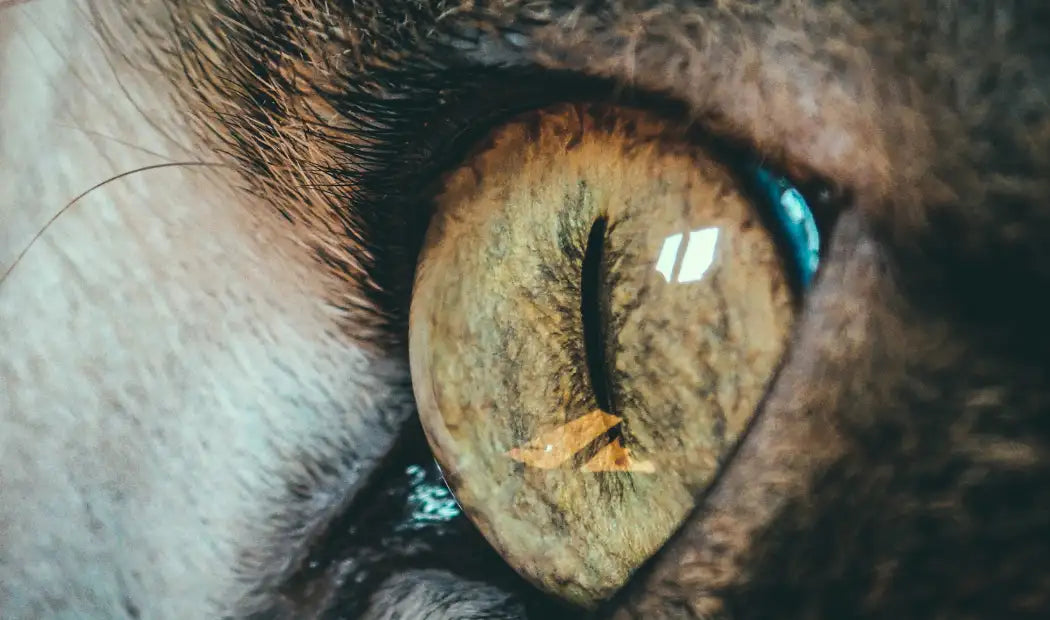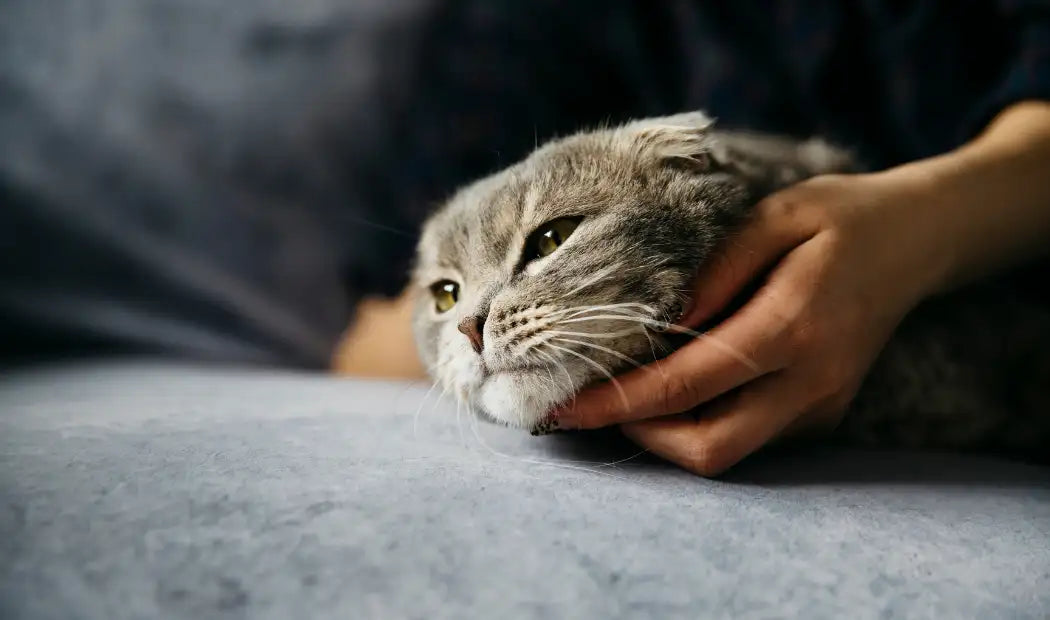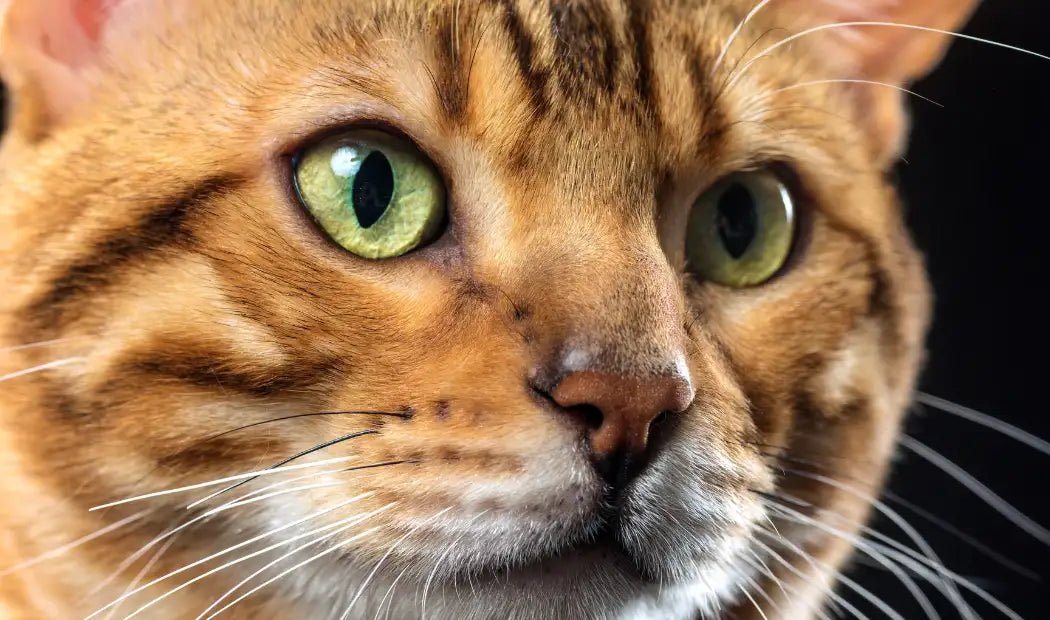
What colors can cats see? - Cat Vision
The allure of cat eyes is something that can not be conveyed in words. The mesmerizing windows to the souls that just not captivates you with its gaze but also takes you around the fascinating realm of perceptions. Amidst the kitty vision tales, there is one question that intrigues the cat lovers most is what colors can cats see?
Ever sat with your cat dressed in an outfit that matched their fur coat and wondered if our furry bundle of joy recognized the similarity. To unravel the answer we need to understand that cats perceive the world through a different lens, one that is characterized by a limited number of hues. Prepare to uncover the captivating world of cat eyes and learn what colors can cats see…
The physiology of cat eyes

The cat's eyes feature tapetum lucidum, elliptical pupils, rod cells, and cone cells. They also have binocular vision—just like humans—which provides depth perception and accuracy, as both eyes work together.
| Tapetum Lucidum | A layer of tissue behind the retina that reflects light passing through the retina back into the eye, enhancing night vision. |
| Pupil Size and Shape | Cats have elliptical pupils that can contract to a narrow slit or expand to a wide circle. |
| Rod Cells | Cats have a high density of rod cells in their retinas, which detect low levels of light. |
| Cone Cells | While cats have fewer cone cells than humans, they still possess them. Cone cells are responsible for color vision and detail perception in bright light. |
Color palette of cats

Do cats see color?
Yes, cats can see colors—but not like humans. Humans have trichromatic vision, meaning three types of cone cells sensitive to red, green, and blue. Cats have dichromatic vision, meaning they have two types of cones sensitive to blue and green.
How many colors can cats see?
It's challenging to estimate the exact number of colors cats can see. However, due to their dichromatic vision, they can distinguish shades of blue and green. Their color vision encompasses only a fraction of what humans perceive.
What color can cats see?

| What colors can cats see? | Can they see it? |
|---|---|
| Can cats see the color red | No |
| Can cats see the color pink | Not effectively |
| Can cats see the color green | Yes |
| Can cats see the color blue | Yes |
| Can cats see the color orange | Not effectively |
| Can cats see the color purple | Limitedly |
| Can cats see the color yellow | Yes |
Cat color spectrum (Cat color vision)
What colors can cats see?

What do cats see?

Colors:
Cats can see colors, but they only have two cone cells, which limits their color vision. Blues and greens are the colors cats can see. Other colors like red, orange, and pink appear grayish or dull to them.
Night vision:
A cat’s eye is built for low-light conditions, which helps them see in near-total darkness. With the high concentration of rod cells, cats can not only see in dim light but also detect motion.
Vision Range:
Cats are nearsighted, due to which the faraway things appear blurry to them. Cat vision is more effective within the range of 6 to 20 feet. They can’t focus well on things very close, either — that’s why they often rely on their whiskers and sense of smell to explore objects nearby.
How do cats see?

- Light enters the eyes through the cornea.
- The light then passes through the pupils.
- The light is then focused on the retina through the lens.
- The light information collected by rods and cones is converted into electrical signals.
- The electrical signals travel to the brain.
- The brain processes the signals into what do cats see.
How do cats use their color vision?

1. Hunting:
Cats can spot their prey more easily in low light thanks to their vision. While they rely on motion and hearing, color vision helps them identify targets efficiently.
2. Camouflage Detection:
Color vision helps cats distinguish objects from backgrounds—essential for detecting camouflaged prey or threats.
3. Detecting Movement:
Cats can detect movement against different backgrounds, aided by color variation—even though they perceive fewer colors than humans.
4. Navigating their Environment:
Cats use color cues to differentiate objects, which aids them in navigating, especially in dim light.
Myth busting (Cats Vision):

1. Can cats see in the dark?
Cats see well in low light due to their large pupils, reflective eye layer, and rod cells—but they cannot see in total darkness.
2. Can cats see colors like humans?
No. With only two types of cone cells, cats have difficulty perceiving red-based colors like red, orange, and pink, which may appear muted or grayish.
3. Can cats see spirits?
No scientific evidence supports this belief. Mysterious cat behavior is usually attributed to their acute senses and curiosity.
4. Are there colors only cats can see?
No, cats simply see a narrower range of the color spectrum. There are no exclusive colors visible only to them.
5. Are cats color blind?
No, Cats are not color blind. But they can see the world in blues, grays, and soft greens.
Final thoughts!
This guide explored cat vision and answered the popular questions: “Can cats see in color?” and “What colors can cats see?” It also debunked common myths. To summarize, cats primarily perceive shades of blue and green, while red, pink, and orange likely appear muted or grayish.
As we bid farewell, let’s marvel at the mysteries of cat eyes. In the world of feline vision, every shade tells a story, every hue whispers a secret, and every gaze invites us to embrace the beauty of the unseen.
Check out Pets by Numbers and learn how to paint a cat if you want to capture the beauty of a cat's eyes on canvas. Pets by Numbers offers customized pet paint-by-number kits and pet pop art kits to help you create your own masterpiece.
FAQs
Do cats see in color? Can cats see color?
Yes, cats can see in color.
What colors can cats see best?
Cats can see blues, soft green, and yellowish-greens.
What colors do cats like?
Cats may not like colors the way we do, but they are more responsive to some colors based on what they can see clearly.

